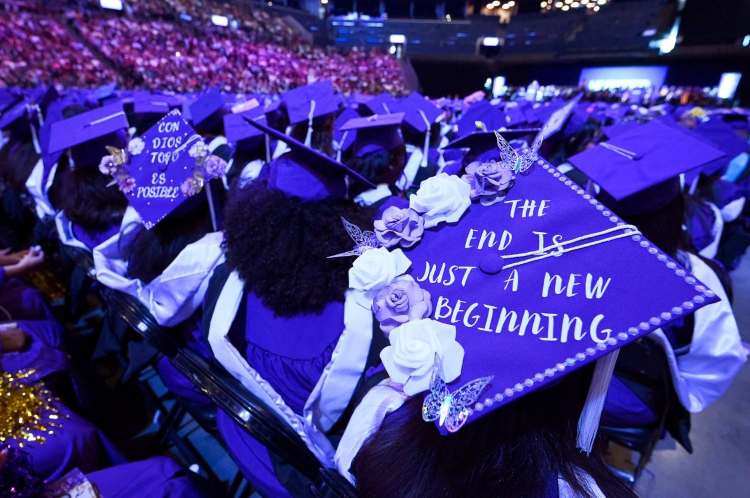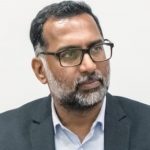
Migration policies and the American dream: On September 19, the White House announced an unprecedented $100,000 annual fee per H-1B visa, alongside other measures that harden entry and work pathways for foreign talent. Coming on top of proposals to curtail student stays and attacks on optional practical training, this is not an isolated tweak; it is a strategic reversal of the post-war formula that made the United States the world’s scientific and economic superpower. The immediate effect will be fewer skilled workers. The lasting effect will be slower innovation, weaker universities, and a smaller, older labour force — outcomes that competitors will welcome.
The H-1B channel is the primary bridge from US universities and global labour markets into America’s high-skill economy. Turning it into a six-figure annual levy is, in substance, a talent tax that many startups, labs, and mid-size firms will not pay — especially for early-career hires who power research teams and product pipelines. Legal scholars question whether the executive branch can impose a fee so far beyond cost recovery, ensuring months of uncertainty even before the economic damage is tallied. Meanwhile, India and China — home to the majority of H-1B applicants — will see their best graduates choose Canada, the UK or Australia, while US firms shift work to where talent resides.
The timing compounds risk. In August, DHS proposed ending “duration of status” and replacing it with fixed F- and J-visa terms, injecting status risk into graduate programmes and post-doc pipelines. Coupled with the H-1B fee, the message to the world’s best students and researchers is unmistakable: the United States is an uncertain bet.
READ I Fed rate cut risks stability of US economy
Migration policies and GDP growth
Serious modelling already captures the macro cost of a policy turn like this. An AEI–Brookings exercise that built high- and low-immigration scenarios finds 2025 GDP growth lower by 0.1–0.4 percentage points under tighter policy, with the “low” case yielding net negative migration — more people leaving than arriving — for the first time in generations. The Dallas Fed has independently warned that declining immigration mechanically weighs on growth by shrinking labour-force and consumer-demand trajectories. In short: fewer workers, fewer buyers, lower output.
This is not a one-year story. Potential growth depends on labour-force expansion and productivity. With US fertility below replacement and the population ageing, immigration has made up much of the post-pandemic population growth. Squeezing legal channels now ensures a smaller workforce later — precisely when entitlement costs rise and the technology frontier demands more engineers, not fewer.
Optional practical training
OPT is the quiet keystone that keeps US campuses, companies, and labs connected. Roughly hundreds of thousands of international graduates rely on OPT annually—especially the STEM-OPT extension—to translate American education into American innovation. It is the largest single lawful pathway for university educated foreign talent to gain US work experience, and a material share later transitions to H-1B. Threats to terminate or hollow out OPT sever the bridge between US training and US production.
A large empirical literature shows what is at stake. When access to high-skill visas or post-study work narrows, US patenting falls, product innovation slows, and young firms are likelier to die. In the opposite direction, expansions of high-skill pathways boost patenting and startup formation — effects that spill over to natives as research teams scale and supply chains thicken. These are not modelled hopes but measured outcomes in cities and firms exposed to past H-1B and OPT shocks.
Immigrants are force-multipliers, not substitutes
The latest evidence is blunt. An NBER study finds immigrant inventors account for about 23% of all US patents over 1990–2016, punching far above their population share. USPTO data show a rising fraction of domestic patents list at least one immigrant inventor, with mixed teams (immigrants and US-born) producing especially influential work. Correlations between H-1B intensity and state-level patenting are extraordinarily high. This is not displacement; it is amplification—immigrants raise the productivity of native co-workers and make new specialisations viable.
The entrepreneurial channel is equally powerful. Nearly half of Fortune 500 companies were founded by immigrants or their children, generating multi-trillion-dollar revenues and employing millions. Many unicorn founders first arrived on student visas before moving onto OPT and H-1B. Policies that chill those pathways today will be visible in the IPO pipeline and regional growth maps tomorrow.
Universities and STEM talent
Universities are not just classrooms; they are the operating system of US science. International students contribute tens of billions of dollars to the economy and are indispensable to research teams in AI, semiconductors, biomedicine and clean energy. Visa volatility raises the cost of recruiting top PhD cohorts, deters applications, and pushes collaborations offshore. In 2024–25, OPT participation rose sharply; the new policy turn will reverse that momentum and hand competitors an opening they have sought for years.
The damage of restrictive migration policies spreads quickly: labs postpone grants that depend on post-docs; companies expand R&D hubs in Toronto, London or Bangalore; and the US loses information advantages that come from being the world’s preferred scientific magnet. Measured over a decade, this looks like fewer breakthroughs, thinner supply chains for critical technologies, and a diminished role in standards-setting.
Long-run strength vs short-term symbolism
The argument for a $100,000 H-1B fee is “protect American jobs.” But the economics of high-skill migration do not work like hourly spot markets. The US benefits because it aggregates scarce talent at scale — on campuses, in labs, and across clusters like Silicon Valley and Boston’s Route 128. A prohibitive levy fractures that aggregation. It does not reallocate those scientists to US citizens; it reallocates the research itself to other jurisdictions. That is why reputable forecasters see lower GDP, not higher wages, as the practical outcome of restrictive policy.
There is also a credibility cost. For a century, the US scientific brand combined open inquiry, stable rules, and a welcoming posture to strivers. Abrupt fees, status curtailments, and rhetorical hostility communicate the opposite. Washington can levy a talent tax; it cannot prevent a brain-drain in reverse.
A superpower’s edge is not an entitlement; it is a compounding asset. America compounded by pairing world-class institutions with open channels for the world’s best minds. The latest anti-migration turn—epitomised by a $100,000 H-1B fee, coupled with moves against OPT and student stability — breaks that pairing. The near-term macro arithmetic shows slower growth; the microeconomics of innovation point to fewer patents and thinner pipelines; the strategic ledger records a transfer of advantage to rivals. A nation that taxes talent is, in effect, taxing its future.
Anil Nair is Founder and Editor, Policy Circle.

